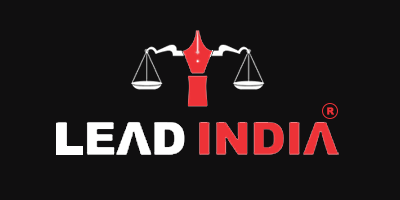In a federal state, governance is constitutionally divided between the central, state, and provincial governments, each of which operates within its realm. The Indian Constitution establishes a federal structure of governance with a significant preference for the center. Federalism can be executive, cooperative, collaborative, or competitive.
While cooperative federalism is a constitutional principle, many argue that it is not fully implemented. The reason for this could be that India’s central government is intrinsically more powerful than its state governments. The Constituent Assembly strengthened the central government to counter separatist impulses among states, which were frequent at the time of partition. Furthermore, these powers make sense for administrative ease, because India has a huge geographical and cultural terrain with various socioeconomic and cultural backgrounds.
What is Cooperative Federalism
Cooperative Federalism in India is based on the idea of a stable partnership between the core and other units. It encourages all governmental entities to step up and work together to tackle common social, political, economic, and civic issues.
According to the Supreme Court in State of Rajasthan v. Union of India, the Indian federalism model is ‘cooperative’. Cooperative federalism means that, while there is a constitutional provision for power distribution, these powers are to be exercised jointly by the central government and the states. Distinguished jurist M.P. Jain observed that these governments are interdependent rather than independent.
Need A Legal Advice
The internet is not a lawyer and neither are you. Talk to a real lawyer about your legal issue

Cooperative Federalism in India: Constitutional Articles
The Constitution’s authors aimed to achieve synergistic governance by delegating important powers and responsibilities to the Centre and states. Nonetheless, they based their authority on Parliament’s decision and the Supreme Court’s ruling. As a result, the Centre gains more particular authority while maintaining the essence of Cooperative Federalism.
- 7th Schedule: The 7th Schedule of the Indian Constitution split all power among the central, state, and concurrent lists, with the Centre retaining some residual powers. Article 249(5) allows the Indian parliament to change the subjects on the state list. To effect change, the resolution must pass an in-state council by a two-thirds vote.
- Services Available Throughout India: All India Services provides for a unified court system to formulate national and state laws. Article 312 of the Indian Constitution embodies this clause, which promotes integration under cooperative federalism in India. Article 263 mentions an inter-state council to address mutual interests between the states and the Centre.
- The clause of full faith and credit: Article 261 underlines complete faith and credit for all records, public acts, and judicial processes of the Union and its states throughout Indian territory. This process fosters trust and collaboration between the Centre and the states.
- The Zonal Council: To promote coordination, each zone is represented by five zonal councils: central, north, south, east, and west. The State Reorganization Act of 1956 creates these, although the northeast zonal council is created under a separate act.
- The NITI Aayog: To promote more cooperative federalism, the NITI Aayog replaced the Planning Commission. This body advises the Centre and states on how to manage the conversation and coordination between these two powers.
- GST: The Indian Constitution’s 101st Amendment Act established GST, a unified taxation system. It is a one-of-a-kind tax imposed directly on consumers by manufacturers to achieve the “one nation, one tax” ideal.
Several institutions have attempted and failed to resolve center-state feuds, making cooperative federalism in India challenging. States’ freedom in creating laws, fiscal support from the center, and power decentralization are all means to improve cooperative federalism.
The legal structure in India’s Constitution, as well as its implementation by the central and state governments, show that, while cooperative federalism has not been fully fulfilled, it is also not a myth.
The scheme of power distribution, state representation in lawmaking and policymaking, and the establishment of bodies such as Inter-State Councils, Zonal Councils, and the NITI Aayog Governing Council all demonstrate the government’s determination to create a unified framework of cooperative federalism.
Lead India offers free legal advice and online information, in addition to other legal services. We provide a forum to speak with a lawyer and ask legal questions. Lead India’s solicitors can help you with any legal difficulties. Lead India’s solicitors may assist you with any legal issues. Lead India also provides free online legal help in India. In addition to giving online legal assistance, Lead India allows users to ask specialist questions for free.





 Talk to a Lawyer
Talk to a Lawyer